Ute
4WD and AWD
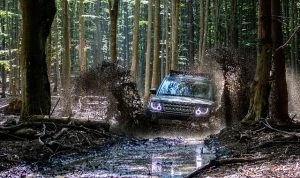
Getting the best grip on the road or terrain is what will get you moving forwards from A to B in the shortest time. Ever since the invention of the first cars, two-wheel-drive has been the mainstay for delivering the engine’s power out to the wheels. At first, two-wheel drive was usually via the rear wheels, as it was much simpler to run a drive shaft from the engine at the front of the car back to the rear wheels to get grip from the rear wheels and to let the front wheels have the job of steering the vehicle.
In saying that, there is also history of 4WD being experimented with back as early as the late 1800s in combination with a traction engine, and, of course, in World War II, the 4WD Willys Jeep was a game-changer.
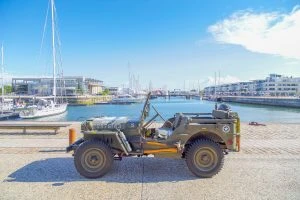
Once mechanical engineering and quality improved over time, the concept of having the engine over the front axle and the front wheels as the driving wheels as well as for steering the vehicle lowered production costs. A combination of rear-wheel-drive and front-wheel-drive cars were available as a matter of course right up to the 1970s and 1980s. Through the 1990s up until the present day, it was more common to see front-wheel-drive cars for everyday driving.
However, it was the 1980s that proved to be a very innovative period in automotive design and mechanical engineering. The greatest advancement in road-going cars was arguably the use of four-wheel-drive to establish greater levels of grip. As racing and supercars demanded faster cars, the need to control all that power (and actually make better use of it) was essential for winning, especially as there was an ever-increasing number of high-performance cars being pulled out of roadside hedges or being wrapped around power poles.
Enter Audi. Audi’s Quattro technology marked a significant moment in high-performance cars’ and supercars’ history. The Audi Quattro’s technology was essentially the dawn of the modern supercar’s 4WD system, and when Audi entered the World Rally Championship in 1981 with their Audi 80 Quattro car, they were unbeatable. The second-place car was over twenty minutes behind the race-winning Audi!
What is the difference between 4WD and AWD?
This is a good question to answer, because there are numerous new cars of all shapes and sizes available with AWD or 4WD. Generally speaking, four-wheel-drive (4WD) is the older off-road system that has the power split 50:50 front to rear. Add a diff-lock into a 4WD system, and these are off-road kings. Four-wheel-drive can be disengaged so that just two-wheel-drive (2WD) can be used on easier terrain, including for when you’ve finished your off-road adventure and you just want to head back home on the tarmac with 2WD only.
The basic principle of an all-wheel-drive (AWD) system is that it can deliver the optimum level of torque to each wheel individually, thus giving the best possible drive and traction. AWD systems tend to be permanently engaged, but with the power split front to rear, along with individual wheels being variable according to what each wheel is sensing and therefore demanding at the time. AWD systems are more complex in that they use sensors which send precise information and values of each wheels’ speed, torque, wheel slip/spin, brake pressure, and steering input to the AWD’s central control system. The control system then adjusts the torque supplied to each wheel.
Land Rovers and many other new serious off-road vehicles use AWD systems with various diff-locking abilities, which also make them real off-road kings. Four-wheel-drive systems are simpler in nature and are thus simpler and cheaper to fix than more complex AWDs. That said, many manufactures like Subaru know how to make solid, dependable AWD systems for their cars and SUVs that are mainly aimed at everyday on-road use and trips up to the ski fields, but with the credentials for performing well even in some fairly serious off-road terrain.
If you live in a part of the world where gravel roads and rainy seasons collide, then an AWD vehicle with decent ground clearance should be parked up your driveway. If your day includes a trek out to the building site, feeding out to stock, or traversing any serious off-road terrain, then a heavy-duty 4WD or AWD vehicle will be your companion. The good news is there are plenty of these sorts of vehicles about, many of which can be bought new at a good price via Private Fleet.
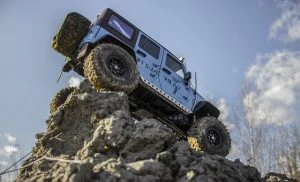
Campervan Conversions And #VanLife
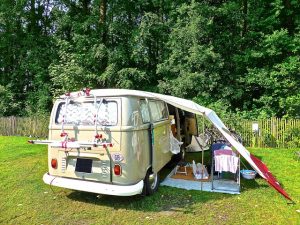
It’s perfectly possible to sleep in the back of most cars in a pinch, as long as the rear seats fold flat and you have a reasonable bit of padding underneath you and a pillow (speaking from experience here). However, I wouldn’t want to do it for more than a night or so in a row without very good reason. If you like to stay in campgrounds or in the middle of nowhere but don’t want to lug around a caravan, then possibly the answer is to build your own campervan, giving you more versatile motoring as well as the ability to take secure accommodation with you – and making it easier to find a park when you stop in to pick up supplies.
If you want to convert a vehicle to a campervan, you need to start with the right one. Vans are always popular and give you more floorspace and headroom in your mobile bedroom, but it’s also possible to convert a sizeable SUV or MPV.
Good vans for converting to a campervan include:
- Mercedes Sprinter (a popular choice for many enthusiasts)
- Ford Transit
- Fiat Ducato
- Toyota Hiace
- Hyundai iLoad
- VW Crafter
- VW Kombi – the classic retro campervan!
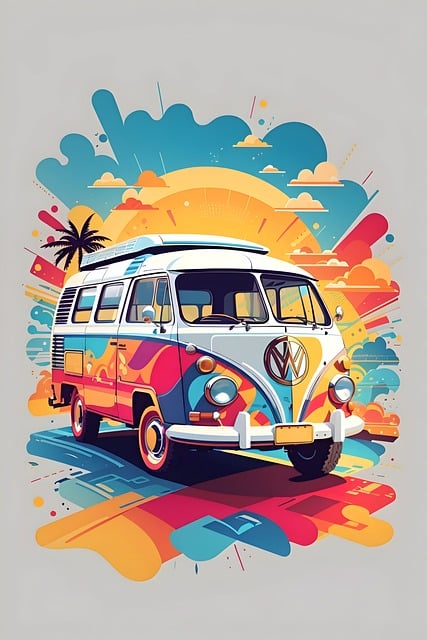
Good SUVs and MPVs for conversion are:
- Toyota 4Runner
- Toyota Estima
- Honda CRV
- Honda Odyssey
- Skoda Octavia
In fact, any decent-sized SUV or van or MPV can be converted into a campervan. Even some utes with a covered deck can be used as campervans. Some can even be converted into full legal motorhomes, as long as you meet the standards.
The simplest way to convert your vehicle into a campervan is simply to fold down the back seats, then toss in a mattress, a butane stove and some picnic plates, and you’re good to go. You may also be able to even remove the rear seats completely, although whether you can do and have a legally roadworthy vehicle will depend on which state you’re in.
Assuming that you can remove the rear seats permanently (or at least until your holiday’s over), then you can go one step further and build a bed platform, which will avoid the problem of weird niggly bumps under the mattress that will make you realize where that folk tale of the Princess and the Pea came from. The advantage of a bed platform is that you can store stuff under it (like your clothes and your cooking gear).
If you want more than a place to sleep and a place to stash clothes and food, then you can add all sorts of things. LED fairy lights and rechargeable batteries have made lighting a lot easier than it was when I was in my 20s, so don’t worry about installing fancy lights unless you’re super-keen. The upgrade that a lot of people like to go for is a loo of some sort; in fact, if you’re a New Zealander reading this, you have to have some sort of loo on board to get certification as a freedom camper. I’d add curtains as one upgrade, as cars and vans are usually built for visibility, which means that when you’re trying to sleep or get dressed inside the van, you’re still exposed to the outside world. Even if you are in the middle of nowhere and get changed in the dark, the light of the rising moon can still wake you up in the wee smalls (although an eye mask or a beanie pulled over your eyes can do the trick).
Ultimately, exactly what you want to put into your vehicle to convert it to a campervan will depend on what you want to do with it and how long you’re going to be doing it for. If you are currently without a permanent home and living the van life, like one of my nieces did, then something larger will make your life more comfortable. The big thing to remember, as with any DIY project, is to measure first and play around with squared paper (or a computer-aided design tool if you know how to use one) before you head down to Bunnings and start cutting up the timber.
To be legally classed as a motorhome in Australia, the vehicle has to be fitted with seats and a table, which need to be fixed (although fold-down tables are legit); storage (fixed), somewhere to cook (also fixed) and somewhere to sleep, which also – you guessed it – needs to be fixed. It also needs good ventilation and a fire extinguisher, and you need to stick with the weight restrictions for the class of vehicle. If you want to add anything fancy involving electricity, water or LPG gas, then this needs to be professionally installed and certified for your own safety as well as to meet the requirements. You can read the full requirements here.
You can also take the easy option and simply add a rooftop camper to a ute or 4×4, which takes out a lot of the hassle of cutting, measuring and shocking the neighbours by what you say after hitting your thumb.
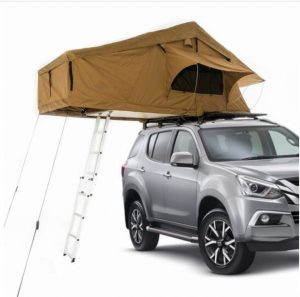
Kei Cars: The Little Cars That Can
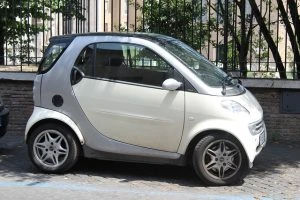
In the Western world, cars seem to have been getting bigger. For example, my early 2000 Volvo S70, a generous sedan when it came out, is shorter than the more modern “little” hatchbacks in the supermarket car park beside it. However, this isn’t the case around the world. In Japan, congestion is a problem in busy cities such as Tokyo and Kyoto, so one of the solutions was to introduce what are known as kei cars, also known as compact cars. Some people call these K-cars, as this is approximately the way the word “kei” is pronounced.
The concept of kei cars isn’t new; in fact, the Japanese government introduced the general idea and legislation related to these vehicles in the late 1940s as part of the post-WWII recovery efforts. Back then, it was more about encouraging car ownership and stimulating the local automotive industry (and you can see for yourself how well that worked, given the number of Japanese makes on Australia’s roads). Today, however, it’s more about congestion and fuel consumption.
What is a kei car? As the Japanese name suggests (in full, it’s kei-jidōsha), it’s a small car. Specifically, it’s one that has restrictions on its size, both in terms of its dimensions and its engine displacement. To qualify as a kei car, an automobile has to be no taller than 2 metres, no wider than 1.45 metres and no longer than 3.4 metres. In terms of engine displacement, the maximum allowed is 660 cc. There’s no official limit on engine power, but it’s very unusual for a factory kei car to have more than 47 kW. Not that tuning and tweaking to get a bit more power is out of the question for those interested… Most of them are speed-limited to 140 km/h, which makes sense, given that these are designed for crowded city streets, not open road rural running. The width means that they don’t handle quite as well at high speeds, so that’s another reason why their top speed isn’t as high as what you’d find with the average Toyota Corolla.
Needless to say, electric kei cars are out there as well.
To encourage the adoption of kei cars, the Japanese government has a few incentives set up. If a car qualifies to have the distinctive yellow kei plates, it’s exempt from the need to buy parking space (apparently, to buy a car in Japan, you first have to buy street space to park it). Various on-road taxes are reduced with kei cars, as these taxes are based on things such as the engine displacement and the weight.
Now, we all know that where there are large numbers of people, there are houses to fix and goods to be transported, which require vans and trucks. Your typical kei car has the sort of cargo space that would suit a minimalist (Marie Kondo would love these, if she doesn’t already). However, kei vans and kei trucks are a thing – although we’d call latter kei utes, as they’re “pickup truck” rather than a miniature version of a big old Scania. The kei vans or microvans are allowed to be taller than the kei cars, which allows the to carry more of a load and has earned them the nickname of “miàn bāo chē” (meaning “bread loaf cars” in nearby China. The kei trucks have the same basic wheelbase but a cab-chassis layout.
Because of their low fuel consumption, suitability for urban settings, kei cars and their relatives are growing in popularity in other parts of the world outside Japan. Their general cuteness relates to another Japanese concept, namely the kawaii (cute) aesthetic. Although many customers in Australia are leery about very small cars, given that physics says that they’re not going to come off well in a collision with an SUV, some popular kei marks are found in the Aussie market. Do any of these sound familiar?
- Suzuki Alto
- Suzuki Jimny
- Misubishi i-Miev
- Smart ForTwo (this one is unusual, as it’s a kei car that’s not from a Japanese marque).
These are all “regular” cars that meet the criteria for kei cars that you can find down at your local dealer (which is why we have them in our reviews page). Plenty of people also arrange for private imports of popular kei cars such as various Daihatsu models, the stylish Honda Beat coupe convertible, the Suzuki Every van, the Toyota Copen sports car and the Subaru Sambar, just to name a few. There’s even a kei version of the Mitsubishi Pajero, the Pajero Mini.
Hilux Baby Ute a Champ

I think plenty of people would love to get their mitts on Toyota’s cute baby Hilux. Due to the Champ’s very no frills disposition, the cost of buying a new Toyota Champ Hilux would only be around $20k if you could buy one here in Australia. However, we’ll have to wait and see if the new Hilux Champ actually makes it down under.
Toyota have launched the new Hilux Champ in Thailand, and it was a vehicle that featured, for the first time, at the recent Japan Mobility Show. At this show, it was displayed in numerous configurations to show just how versatile the little Champ can be, and so it was demonstrated as an off-road vehicle, a coffee van, and even as an ambulance.
The Champ workhorse has plenty of variety in the way it can be built up, so, for example, there are long wheel-base (3085 mm) and short wheel-base (2750 mm) variants with two different cargo trays offered. There are numerous holes for bolting down whatever you like to the cargo tray, so you could easily use this as a camper, a stock carrier for the farm, or even as a coffee van. The Champ’s payload for the cargo deck is around the 1-tonne mark.
You can also opt for any of three engines to power the little Champ. Five-speed manual and six-speed automatic gearboxes are available to link with your specific engine of choice. A rather nice 2.4-litre turbo diesel is good for 110 kW of power and 400 Nm of torque. This would be an economical engine with loads of grunt for performing any demanding tasks with relative ease. A 2.0-litre petrol has 102 kW and 183 Nm of torque, while a bigger 2.7-litre petrol produces 122 kW and 245 Nm of torque.
Luxury isn’t the Champ’s forte, so even electric windows are found only on the higher-spec models (not that this is a bad thing – I kind of miss having roll-down windows that work when the key’s out sometimes). The seats are upholstered in black vinyl, and there are a few safety features like seat belts, a strong structure, and two airbags. There is no infotainment system on-board when sold new; however it does come with two speakers, for which you can access, probably via the driver’s instrument panel.
The new Toyota Hilux Champ takes me back to the solid and reliable little 2WD Hilux and Nissan Navara utes of the eighties and early nineties. These were no frills workhorses, but they were very dependable and robust work companions. And yes, I wouldn’t mind having one.